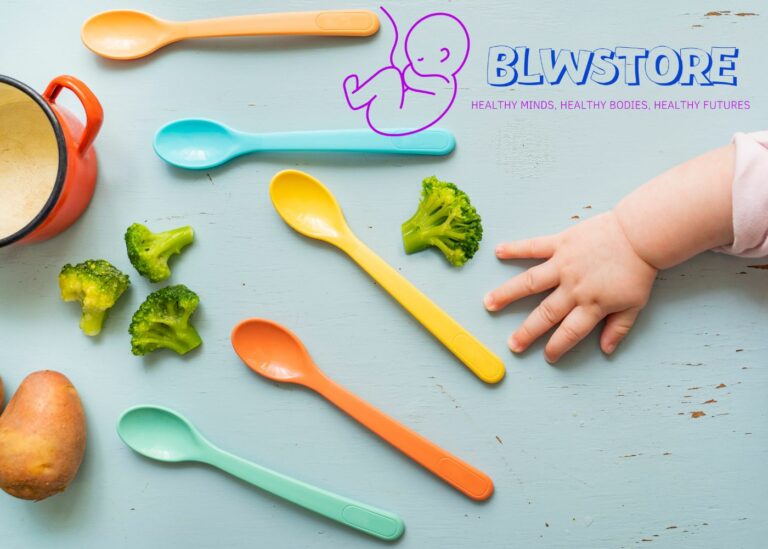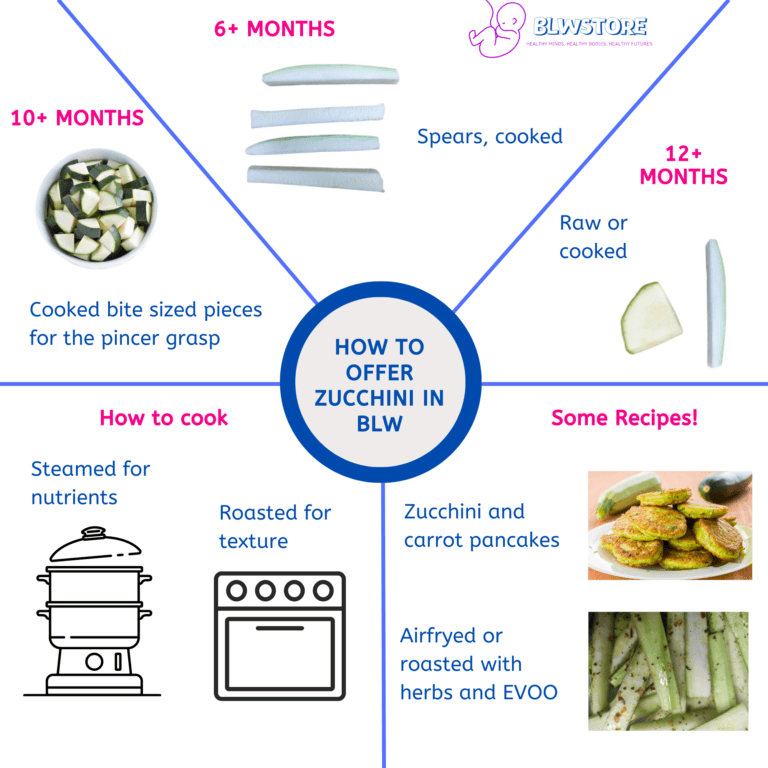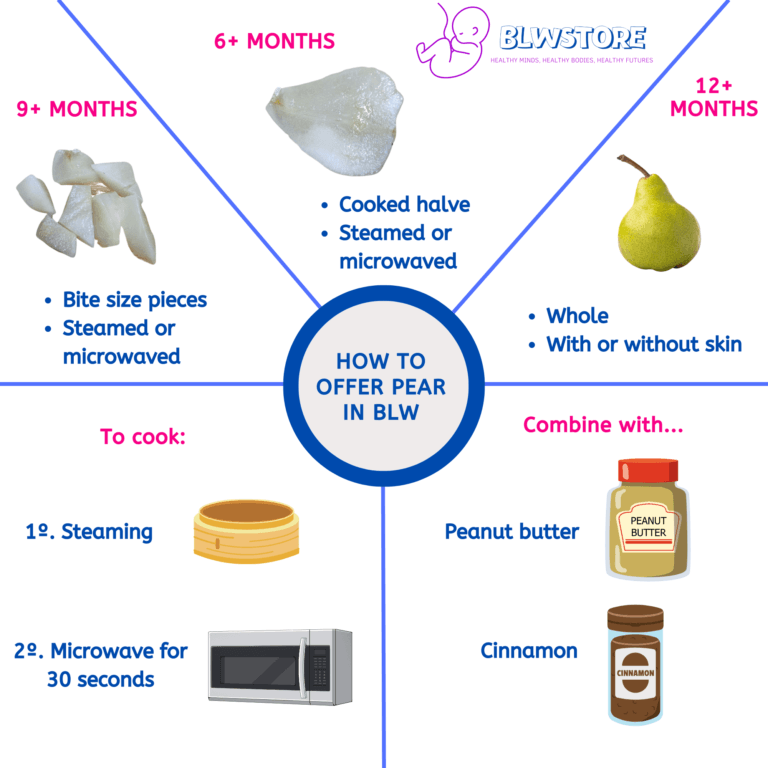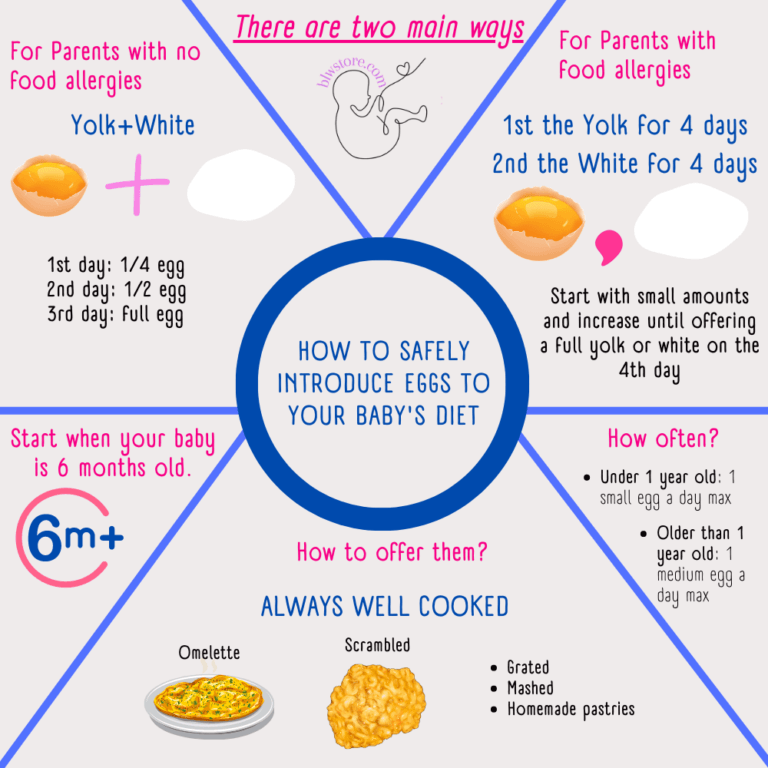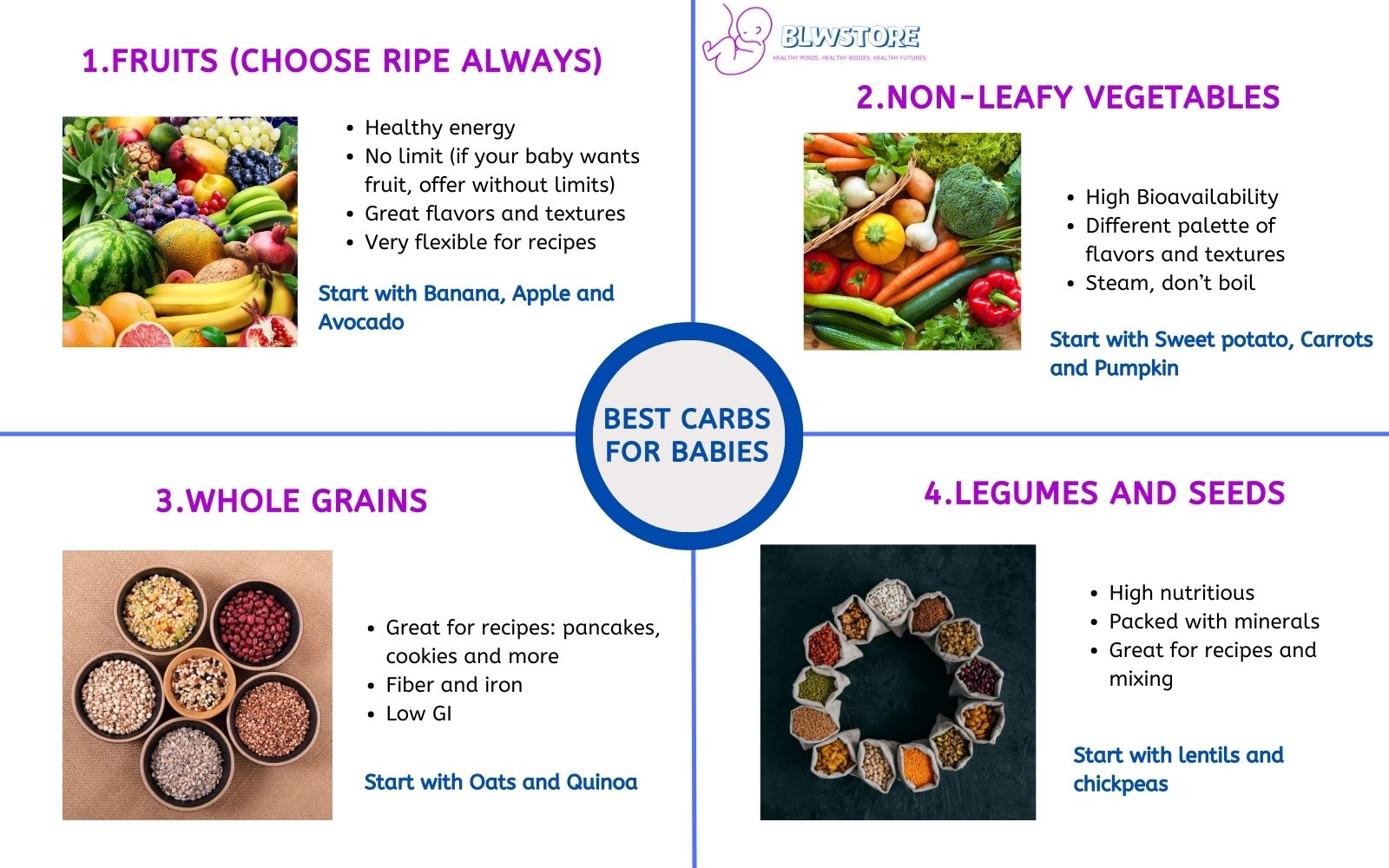
You’ve reached an exciting milestone in your baby’s life. As your little one approaches the magical age of 6 months, it’s time to introduce them to the wonderful world of solid foods. But as you know, not all foods are created equal, especially when it comes to their carbohydrate content.
This article will guide you through the best carbohydrate sources for your baby. Discover why fruits hold the top spot, closely followed by vegetables and whole grains, and learn why processed grains and ultra-processed foods should be sidestepped for as long as possible.
“Food is more than sustenance. It’s a way to nourish and connect with your child, helping them build a healthy relationship with what they eat from an early age.”
Navigating the baby food aisle, reading labels, determining the right food combinations—it can all seem a bit daunting. We’re here to make this journey as easy as possible. Let’s dive into the details.
*Related reads: Best Protein Sources for Babies | Best Fat Sources for Babies
KEY FACTS YOU SHOULD KNOW BEFORE READING
Babies who eat more fruits and vegetables are less likely to develop food allergies
Fruits, vegetables, and grains should make up the majority of a baby’s diet by 9 months of age
Why Carbohydrates are Essential for Your Baby’s Growth
Carbohydrates hold a critical place in your baby’s diet. These organic molecules are not just about energy; they offer many benefits critical to your little one’s development and growth. Understanding why carbs are essential for babies can help parents make nutritious mealtime choices.
Firstly, carbohydrates are a primary source of energy. Remember, your baby is growing at a phenomenal rate. Providing the necessary energy is vital to support this growth and keep their tiny engines running smoothly.
Beyond just energy, carbohydrates are essential for brain development. Not to overwhelm you with dense biology, but it’s worth noting that the brain runs primarily on glucose. By delivering carbohydrate-rich foods to your baby, you’re effectively setting up a conducive foundation for intellectual growth.
Last but by no means least, carbohydrates also help with digestion. Certain carbs, famously known as dietary fiber, help keep the digestive system regular. This is particularly important for babies, as their tiny tummies are still maturing and can be pretty sensitive.
That said, it’s not about flinging any carbohydrate you can find at your baby, but instead making prudent choices. Fruits, vegetables, and whole grains are the gold standard, providing both carbohydrates and a broad spectrum of vitamins, antioxidants, and fiber.
How Much Carbs Should Babies Have?
As per the dietary guidelines, babies should get about 40%-45% of their total calories from carbohydrates. To put it in a more comprehendible perspective, if your baby eats solids three times a day, one or two of those meals should primarily comprise healthy carbohydrates.
What Does a Carb-Rich Meal Look Like?
- A meal could start with a whole fruit or puree, such as a natural and ripe banana or gently stewed apples.
- Next, consider adding a vegetable, like pumpkin or carrots.
- Last, whole grains can make up a small portion of the meal. Foods like brown rice, oats, or whole-grain bread mashed into a meal or porridge can give your baby long-lasting energy.
Remember, variety is also key in your baby’s diet. Not only does this encourage them to become receptive to different tastes, it also ensures they are getting a wide range of nutrients.
What Is Bioavailability and Why Does It Matter?
Bioavailability, in simple terms, refers to the portion of nutrients from food that the body can absorb and utilize effectively. This term becomes crucial when we talk about the nutrition of your little one because not all foods, even the healthy ones, have the exact bioavailability percentages.
Considering bioavailability will not only help you ensure proper nutrition for your baby but also prevents overfeeding.
Bioavailability matters because:
– A baby’s digestive system is not fully developed yet
At six months, your baby’s digestive system is still maturing and cannot break down nutrients with the same efficiency as an adult’s. Therefore, the bioavailability of carbohydrates and other nutrients is usually lower in babies. By selecting foods with high bioavailability, you can make every bite count.
– It’s Essential for Nutrient Absorption
Fruit sugars, for instance, are highly bioavailable carbohydrates because the body can quickly and easily absorb them. On the other hand, the absorption of whole-grain carbs may not be as efficient, as it contains complex carbohydrates that the baby’s body needs time to break down and digest.
– Feeding Frequency and Volume Matters
Babies eat small, frequent meals. If the food you provide is low in bioavailability, they may need to eat more volumes to get the required nutrients. Foods with higher bioavailability ensure that they get the most nutrition from every bite, thus preventing overfeeding.
Remember, quality always triumphs quantity. It’s not just about how much you feed your baby, but also about how much of what you feed can be effectively utilized by your baby’s body.
Which Carbohydrates Have Higher Bioavailability?
Just have to follow this rule:
The more natural and closer to the ground or tree a food is taken, the more bioavailable it will be.
Nature gives us those foods that we should eat. Ripe fruits fall from the tree because they want to be eaten. Vegetables that can be eaten raw are very bioavailable and nutrient-dense.
Conversely, the more processed and the more ingredients a food has, the less bioavailable and healthy it will be.
What Are the Best Carbohydrate Sources for Babies?
1. Fruits (Choose Ripe Always)
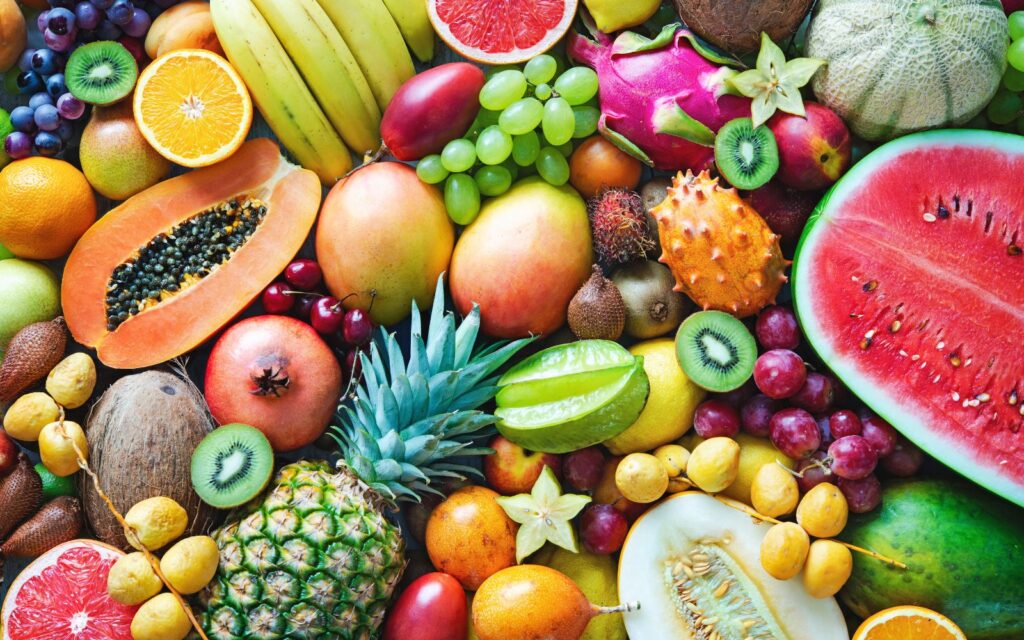
Your baby’s first experience with carbohydrates should ideally begin with fruits.
They are packed full of the healthy sugars that provide readily available energy for your baby’s growing body and developing brain. Additionally, fruits are a great source of fiber, which aids in digestion and prevents constipation. They also offer a variety of essential vitamins and minerals.
The key to serving fruits to your baby is to always ensure that they are ripe. Ripe fruits are not only sweeter and more palatable, but they are also easier to digest.
Fruits have no limit, you can ALWAYS offer fruits to your baby if she is hungry. Our son has 3 bananas a day, plus blueberries, avocado and others. He asks for them constantly, and we don’t have to say no.
These are the ones we would start with:
- Apples: These are juicy and packed with vitamins. Just ensure to serve cooked apples until your baby is about 9 months old, that’s when they can handle raw.
- Bananas: The natural sweetness of ripe bananas often makes it a favorite among babies. Plus, they’re an excellent source of potassium.
- Avocado: Yes, they’re technically a fruit! They are loaded with the healthy fats your baby needs, in addition to fiber and vitamin C.
Incorporating a variety of fruits in your baby’s diet will provide an array of nutrients, flavors, and textures, paving the way for an adventurous eater.
2. Non-Leafy Vegetables (Do not overcook)
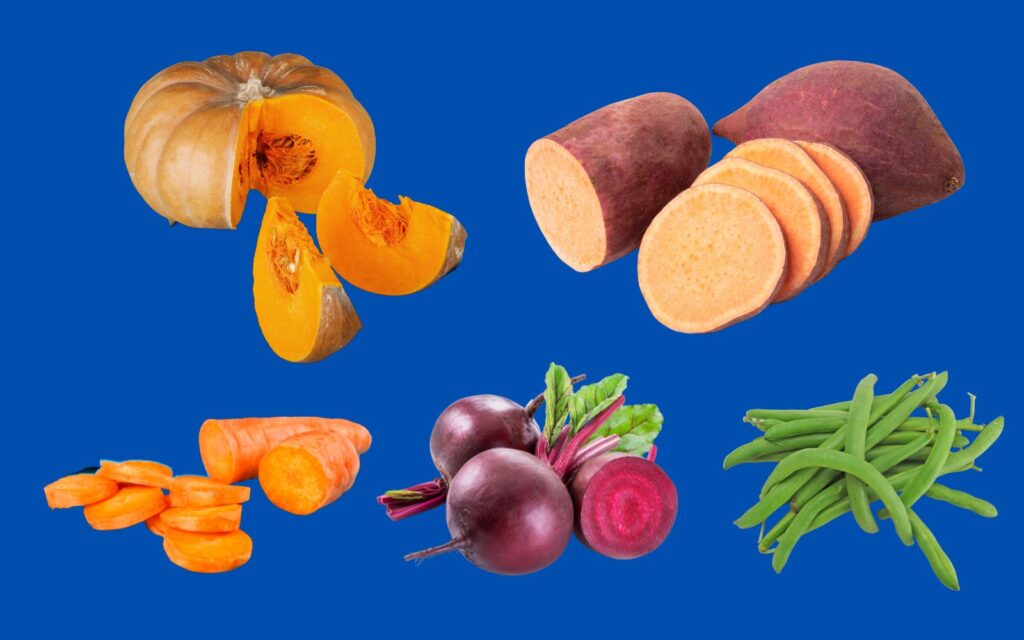
Just like fruits, non-leafy vegetables are an excellent source of carbohydrates for your baby. They’re packed with essential vitamins and minerals and provide a substantial amount of dietary fiber, which aids in digestion. Vegetables such as sweet potatoes, carrots, pumpkins, beans, peas, and beets can make an excellent addition to your little one’s meal times.
Vegetables offer a different palette of flavors and textures for your baby to explore, which promotes sensory experience and the development of taste preference.
Remember: While preparing veggies for your baby, it is crucial not to overcook them. Overcooking can lead to significant nutrient loss. Steaming, instead of boiling, can help retain more of the nutrients, and a soft but firm texture allows your baby to handle and explore their food.
Ensure that vegetables are cooked until they are soft enough to be mashed between your fingers, it’s perfect for your baby’s consumption.
Let’s take a quick look at some common non-leafy vegetables you may want to explore for your baby along with their respective carbohydrate content:
| Vegetable | Carbohydrates per 100g |
|---|---|
| Sweet Potato | 20.1g |
| Carrots | 9.6g |
| Pumpkins | 6.5g |
| Beans | 7.9g |
| Peas | 14.5g |
| Beets | 9.6g |
3. Whole Grains
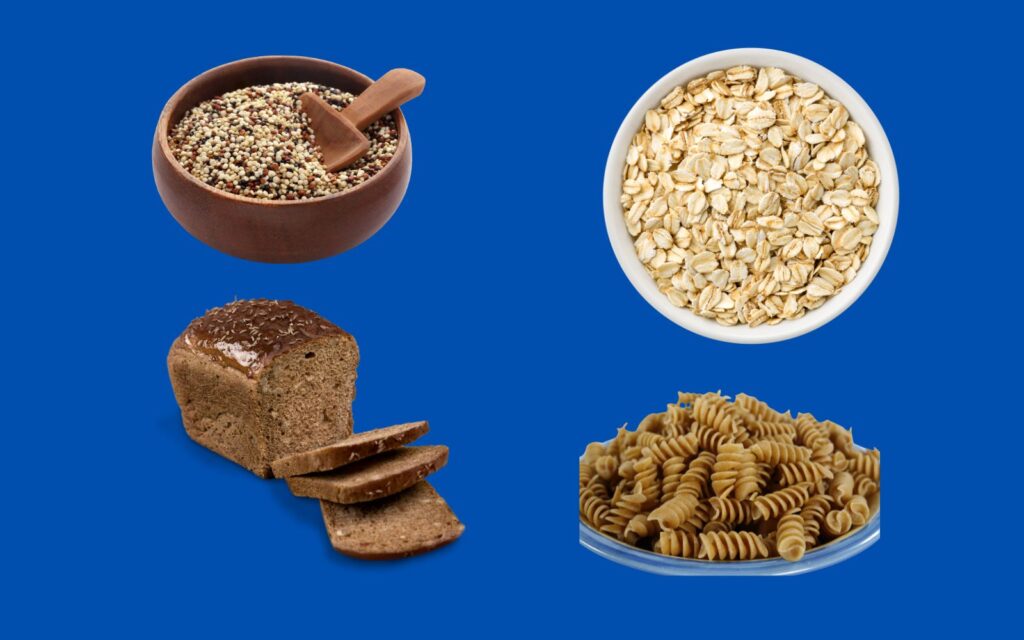
Did you know that babies who eat more whole grains are less likely to become overweight or obese?
Whole grains, unlike their processed counterparts, serve as the ideal carbohydrate choice for your baby due to their high nutritional value. They’re chock-full of essential nutrients like fiber, iron, and beneficial fats.
Some examples of whole grains that can be introduced to your baby include:
- Brown Rice: A perfect intro grain for its easily digestible nature and versatility in different meals, it’s gentle on your baby’s developing digestive system. However, brown rice should not be given to babies until the 12 month mark. Learn more about rice here.
- Quinoa: Packed with protein and fiber, quinoa is gluten-free and easy to prepare. Its nutty flavor makes it an exciting addition to your baby’s transitioning palate.
- Oats: Another excellent first grain for babies, oats can be ground into flour and used in various ways. They are well known for their high fiber content and low allergenic risk.
They are not as bioavailable as fruits and vegetables, but they can be used for lots of recipes babies love, like pancakes, homemade cookies, and more. Learn how to offer bread to babies.
4. Legumes and Seeds
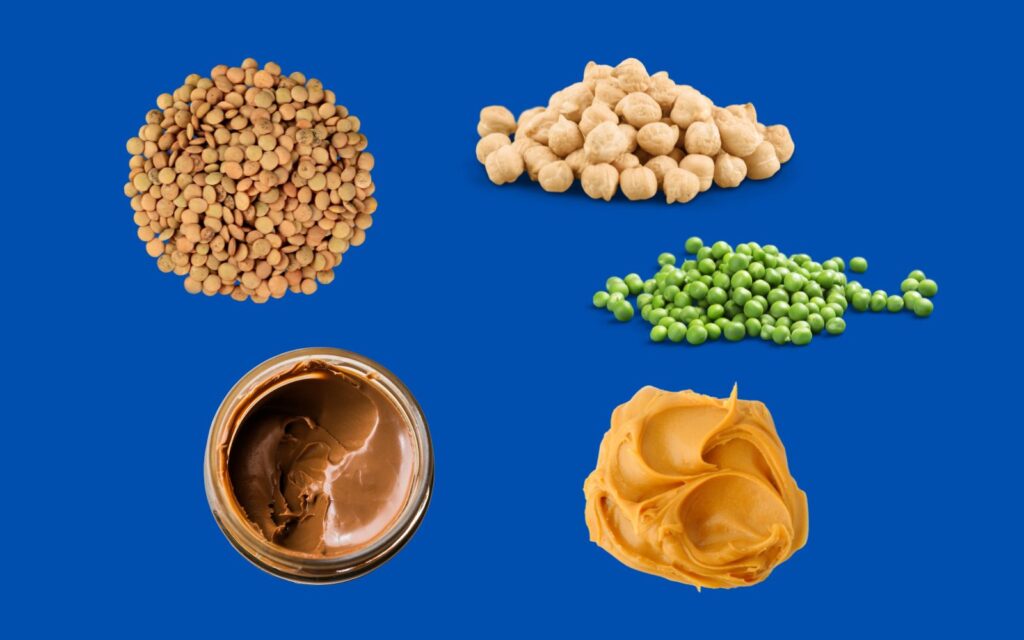
Let’s put a spotlight on legumes and seeds now. These might seem unlikely candidates for your little one’s diet, but in reality, they’re quite the powerhouse when it comes to carbohydrates. Legumes and seeds are packed with other essential nutrients like protein and fiber.
Legumes include foods like lentils, chickpeas, and beans. Noteworthy are lentils, because of their soft texture once cooked, making them ideal for a baby transitioning to solid foods. You can mash or puree cooked lentils into a soft consistency that your baby can safely consume. Chickpeas, especially when blended into a smooth hummus, can also be an excellent choice to add to your baby’s plate.
For seeds, ground flax seeds and chia seeds can be a great addition to foods your baby already enjoys. You can sprinkle a small quantity on top of purees, porridges or yogurt. They are not just carb-rich but are also a good source of Omega-3 which aids brain development. However, remember that seeds should be ground up before feeding to your baby to prevent any choking hazards.
Avoid giving your baby whole nuts as these present a choking risk. Instead, nut butters (like almond butter and peanut butter) can be safely introduced. They’re also a great source of healthy fats along with being a good carbohydrate source. As with other foods, it’s best to introduce one type at a time to monitor for potential allergies.
Let’s sum up what we’ve discussed about legumes and seeds with a quick table.
| Food | Preparation tips |
|---|---|
| Lentils | Cook and mash well. |
| Chickpeas (for hummus) | Cook and blend to a smooth puree. |
| Flax seeds | Ground and sprinkle on foods. |
| Chia seeds | Ground and sprinkle on foods. |
| Almond butter | Introduce slowly, spread on a thin slice of bread. |
| Peanut butter | Introduce slowly, spread on a thin slice of bread. |
What Carbohydrates Should You Avoid Giving Your Baby?
As tempting it may be at times to lean on less nutritionally dense carbohydrates for the sake of convenience, in the long run, the health and developmental benefits of natural sources far outweigh any short term ease. Here’s what you should steer clear of:
1. Processed Grains
Babies under the age of one year should avoid processed grains. Processed grains are those grains that have been milled, a process that removes the bran and germ – this deprives them of fiber, iron, and many B vitamins. Examples would be white bread, and white pasta. While these foods are often easy for babies to consume and digest, they offer little nutritional value, hence should be avoided.
Processed grains can often have added sugars or sweeteners, which are not recommended for babies. The reason being, added sugars can lead to an increased risk of obesity and tooth decay. Therefore, processed grains are not an ideal source of carbohydrates for your baby.
Quick Fact:
2. Ultra-processed Carbs
This group includes foods that are typically high in sugars, unhealthy fats, and salt. They usually contain additives that are not desirable, like artificial flavors, colors, sweeteners, preservatives, and other synthesized ingredients.
If you find any of these items in your baby’s food, it’s safe to assume that it’s best to steer clear.
When it comes to food (baby food included of course), the less processed items, the better.
Most ultra-processed foods are stripped of their original nutritional benefits, often being subjected to high temperature and pressure treatments that eliminate vital nutrients, leaving little more than empty calories behind.
The body breaks down these types of foods quickly, leading to sugar spikes without lasting satiety.
Examples of these foods are:
- White bread, white pasta, and other refined grain foods
- Sugary breakfast cereals
- Snacks like cookies, cakes, and pastries
- Sweetened yogurt and other high-sugar dairy products
- Processed meats like sausages and hotdogs
- Store-bought baby foods packed with additives and preservatives
“Providing whole, unprocessed foods for your baby not only supports their growth and development, but also teaches them to appreciate the taste of real foods early on.”
It might seem demanding to evade this category of foods because let’s face it, they’re everywhere. But remember, with each feeding choice you make, you’re laying the foundation of your baby’s tastes.
3. Other Carbs Babies Should not Ready Eat
- Honey
- Why Avoid: Honey can contain spores of Clostridium botulinum, leading to infant botulism, a serious illness.
- Age to Introduce: Safe after the first birthday.
- Cow’s and Goat’s Milk
- Why Avoid: Lacks essential nutrients for infants and can strain their developing digestive system.
- Age to Introduce: Generally safe after 12 months.
- High-Sugar Foods
- Why Avoid: Can lead to tooth decay, obesity, and poor eating habits.
- Healthy Alternatives: Fresh fruits or homemade fruit purees.
- Toxic Vegetables (Not All Greens are Good)
- Examples: Raw spinach, beets, collard greens and leafy vegetables.
- Why Avoid: High in nitrates, not safe for young infants due to potential nitrate poisoning.
From Ingredient Lists to Labels: Navigating the Grocery Store for Baby Foods
Now that you know about the best carbohydrate sources for your baby, let’s talk about grocery shopping.
By understanding how to read ingredient lists and labels, you can make the best choices to provide your baby with the right kinds of carbs.
Ingredient Lists:
- Their order matters! The ingredients are listed by weight, from most to least. This means, if fruits or whole grains are listed first, you know they are the main ingredients. On the flipside, if sugar or any other sweeteners are listed as the first few ingredients, it may be best to avoid that product.
- Looking for whole foods. The earlier whole foods are listed, the better. Aim for those that list fruits, vegetables, and whole grains as their primary ingredients. Avoid those with processed grains or ultra-processed carbs listed.
Labels:
- Ignore the marketing jargon. Labels such as “all-natural,” “healthy,” and “no artificial ingredients” can be misleading. These terms do not have strict definitions and can mean different things to different companies.
- Look at the nutritional facts. Here, you can find information about the carbohydrate content, fiber, sugar, and other important nutrients. This section can help you determine if the product fits into your baby’s healthy diet.
Last Words
Parenthood is not a race. Every child is unique and will respond to foods differently. The goal is to foster an environment of nourishment and exploration. See this as an exciting opportunity to set your little one on the path to healthy eating habits because, with every mouthful, you’re setting the stage for a lifetime of healthy choices.
Remember the importance of carbohydrates as key energy providers for your little one’s growth and digestive development. Fruits, vegetables, and whole grains are your best bets. Yet, exercise caution in introducing new foods and watch for any signs of intolerance or allergy.
Always make sure to introduce new foods one at a time and allow a few days before introducing another. If any signs of discomfort arise, don’t hesitate to reach out to your pediatrician. They are a valuable resource and will be able to answer any questions or concerns you might have.
Trust yourself and your instincts. After all, nobody knows your child better than you. You’ve got this!
We’re Maria and Alberto, a married couple and educators who are nutrition enthusiasts. Even before we had kids, we were already crazy about nutrition.
We’d read scientific articles, watch videos from nutritionists, and spend hours listening to nutrition podcasts.
Today, we continue doing this, but in a different way, as we’ve learned to sift through the noise and trends. Nutrition, like any other field of knowledge, the more you read and learn, the more you develop a comprehensive understanding of reality, and that’s what has happened to us.
Before having our first child, we focused on learning everything we could about child nutrition, using the same techniques we had already employed, backed by our extensive knowledge in nutrition.
Our mission is to help other parents with their children’s nutrition, to help them become the best versions of themselves.
If we are what we eat and drink, which is absolutely true, let’s do it right!



